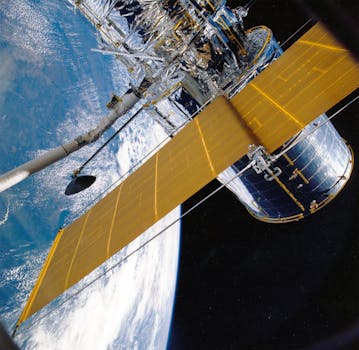
GEO Satellites: Understanding the Technology and Applications
GEO satellites, or Geostationary Earth Orbit satellites, are a type of satellite that orbits the Earth at an altitude of approximately 36,000 kilometers, remaining stationary relative to a fixed point on the equator. This unique orbit allows GEO satellites to provide continuous coverage of a specific region, making them ideal for a variety of applications, including telecommunications, weather forecasting, and Earth observation.
GEO satellites have been in use for several decades, with the first GEO satellite, Syncom 2, launched in 1963. Since then, the technology has evolved significantly, with modern GEO satellites offering higher bandwidth, improved signal quality, and increased reliability. Today, GEO satellites play a vital role in modern telecommunications, providing global coverage and enabling a wide range of applications, including broadband internet, television broadcasting, and mobile communications.
How GEO Satellites Work
GEO satellites work by transmitting and receiving signals to and from Earth stations, which are located on the ground. The signals are transmitted through a series of antennas and amplifiers, and are then relayed to their final destination. The satellites use a combination of solar panels and batteries to generate power, and are equipped with propulsion systems to maintain their orbit and prevent drift.
The GEO satellite orbit is synchronized with the Earth’s rotation, which means that the satellite remains stationary relative to a fixed point on the equator. This allows the satellite to provide continuous coverage of a specific region, without the need for complex tracking systems. The orbit is also high enough to allow the satellite to see a significant portion of the Earth’s surface, making it ideal for applications such as weather forecasting and Earth observation.
Applications of GEO Satellites
GEO satellites have a wide range of applications, including telecommunications, weather forecasting, and Earth observation. In the field of telecommunications, GEO satellites are used to provide broadband internet, television broadcasting, and mobile communications. They are also used to provide connectivity to remote or underserved areas, where traditional telecommunications infrastructure may not be available.
In the field of weather forecasting, GEO satellites are used to monitor cloud patterns, track storms, and predict weather patterns. They are equipped with specialized instruments, such as radiometers and spectrometers, which allow them to collect data on atmospheric conditions, including temperature, humidity, and wind patterns.
Benefits and Challenges of GEO Satellites
GEO satellites offer a number of benefits, including global coverage, high bandwidth, and reliability. They are also relatively low-cost compared to other types of satellites, and can be launched using a variety of launch vehicles. However, GEO satellites also pose some challenges, including signal latency, interference, and orbital congestion.
Signal latency is a significant challenge for GEO satellites, as the distance between the satellite and the Earth station can cause delays of up to 250 milliseconds. This can be a problem for applications that require real-time communication, such as video conferencing or online gaming. Interference is also a challenge, as the satellite signal can be affected by other satellites or terrestrial systems. Orbital congestion is another challenge, as the GEO orbit is becoming increasingly crowded, which can lead to collisions and other safety hazards.
Conclusion
In conclusion, GEO satellites play a vital role in modern telecommunications, providing global coverage and enabling a wide range of applications. While they offer a number of benefits, including high bandwidth and reliability, they also pose some challenges, including signal latency, interference, and orbital congestion. As the demand for satellite communications continues to grow, it is likely that GEO satellites will remain an important part of the telecommunications landscape for many years to come.

